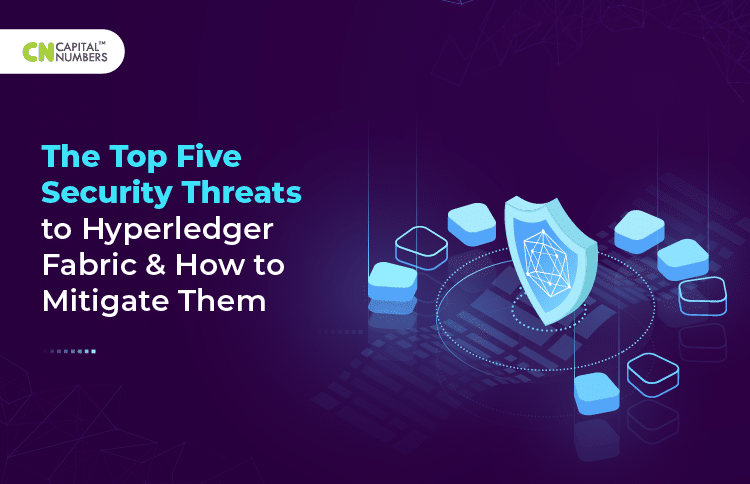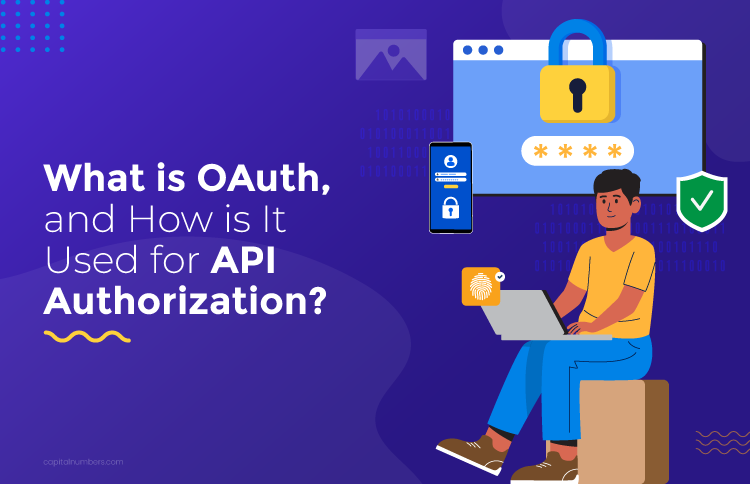The Top Five Security Threats to Hyperledger Fabric & How to Mitigate Them
Table of Contents
Hyperledger Fabric is a blockchain platform designed for enterprise environments. It is a permissioned platform that provides privacy and confidentiality for transactions. As with any technology, security threats must be considered to ensure the safety and integrity of the system.
Despite the security improvements Hyperledger Fabric provides, deployments still require careful configuration and monitoring to ensure they operate securely. Here, we will examine different threats that Hyperledger Fabric operators should consider and discuss how to mitigate them.
What Are the Security Threats in Hyperledger Fabric?
These are the critical security threats in Hyperledger Fabric –
1. Denial of Service (DoS)
A Denial-of-Service (DoS) attack shuts down a network or a machine, making it inaccessible to its intended users. Usually, it interrupts the host temporarily, connected to the internet. Mainly, these attack credit card gateways, banks, etc. Triggering many advertisements on the web page requests creates a load on the web server.
Mitigation
- Monitor and analyze network traffic – Network gridlock can be managed through a firewall or intrusion detection technique.
- Boycott using third-party websites – Partition critical online services (email) from other online assistance that is more prone to attack.
2. MSP Compromise
This threat attacks the blockchain network to lock the credential information. The attacker will ask for money, known as ransomware, in exchange for data.
The data might be encrypted that will unlock only with a specific crypto key. It is like locking an owner in the house and asking for money to unlock it.
Mitigation
- Increased Bandwidth: The initial step that users can take to protect against MSP Compromise attacks is to make the hosting infrastructure “MSP Compromise resistant”.
- Bullet-proof your network hardware configurations: Users can arrange the firewall or router connectivity to decrease incoming ICMP( Internet Control Message Protocol) packages. These may also obstruct DNS(Domain Name System) reactions from further the network (by disabling User Datagram Protocol – 53). It causes protection against specific DNS and ping vulnerability attacks.
- It causes protection against specific DNS and ping vulnerability attacks.
3. Consensus Manipulation
Hyperledger Fabric uses Crash Fault Tolerant (CFT) consensus algorithms. For this, it can’t accept any malicious threat. Currently going on Byzantine fault Tolerant (BFT) algorithms, it can accept up-to 1/3 malicious of the existing network. But with the consensus algorithms, early virus detection can mitigate this threat.
Mitigation
- Deploying a Web Application Firewall: A web app firewall checks all incoming web traffic and purifies malicious programs that can harm the security vulnerabilities of a P2P network.
- Attack Surface Reduction (ASR): It shields against malware programs by stopping threats related to script files, Office files, and emails.
4. Private Key Attacks
The cryptocurrency consists of public and private keys that must encrypt and decrypt the data. They are meant to be handled securely and effectively. If a public key gets exposed by the attacker will lead to having a private key used to decrypt the data. The attacker can easily decrypt and can steal or manipulate the information.
Mitigation
- Use SSL Certificate: Secure Sockets Layer is an international safety policy that specifies a safe link between an internet browser and a web server. It verifies the app’s originality and encrypts the data that needs to be transmitted through the internet.
- Build Strong Password and Modify Regularly: Build a strong password for multiple grid devices, including switches, routers, and firewalls, to prevent network attacks.
5. Smart Contract Encryption
In cryptocurrencies, where Hyperledger Fabric can compromise enterprise logic and network execution, the attack on smart contracts is easier than others. Also, common errors can occur from handling concurrency. The app must be considered for outer security. With this, the performance and use of the smart contract should be observed once deployed to detect strange behavior.
Mitigation
- Bolster Access Control: Use a powerful password system to expand access control standards. Users should include a combination of uppercase and lowercase letters, unique symbols, and digits, and always reset all default passwords.
- Keep All Software Updated: Install anti-virus software for your computer operating system. Update your software time-to-time to ensure security. Generally, when a recent version of the software is introduced, the version includes fixed bugs for safety susceptibilities.
Common Mitigation Strategies
Here are some common mitigation strategies you can follow to prevent security threats –
- Preventive benchmarks to mitigate these security threats are components of a secure deployment.
- It is vital to observe the arrangements and security of the P2P network constantly.
- Many threats can be caught by connecting data across the blockchain P2P network, threat brilliance, and association infrastructure.
- To mitigate smart contracts, they should be developed safely by following the software development life cycle framework.
What Do the Threats Do?
| Threat | Indicators | Data Source |
| DoS | Slow down network performance | Heavy traffic to a network server |
| MSP Compromise | No access to the user’s data | Exploit phishing |
| Consensus Manipulation | Reduce dependency, faith, and responsibility of nodes connecting to a network | Reduce the proof of work mechanism |
| Private Key Attacks | Unwanted transactions, encryption, and decryption occur. | Financial details of businesses |
| Smart Contract Encryption | Costs millions of dollars | When a contract transmits ether to an anonymous address. |
Also Read: Hyperledger in Blockchain: Everything You Need to Know
Bottom Line
Proactive measures to mitigate these security threats are part of a secure deployment. It is vital to monitor the network’s performance and security continuously. These threats can only be detected by correlating data across the blockchain network, company infrastructure, and threat intelligence providers. It can be challenging to ingest and act on this large amount of diverse data. So, account for scalability and analytic capabilities when securing your environment.
And if you are looking to hire Hyperledger developers, look no further than Capital Numbers. Equipped with a talent pool of expert Hyperledger developers, we offer scalable solutions in no time. Want to discuss your project? Book a call today!















